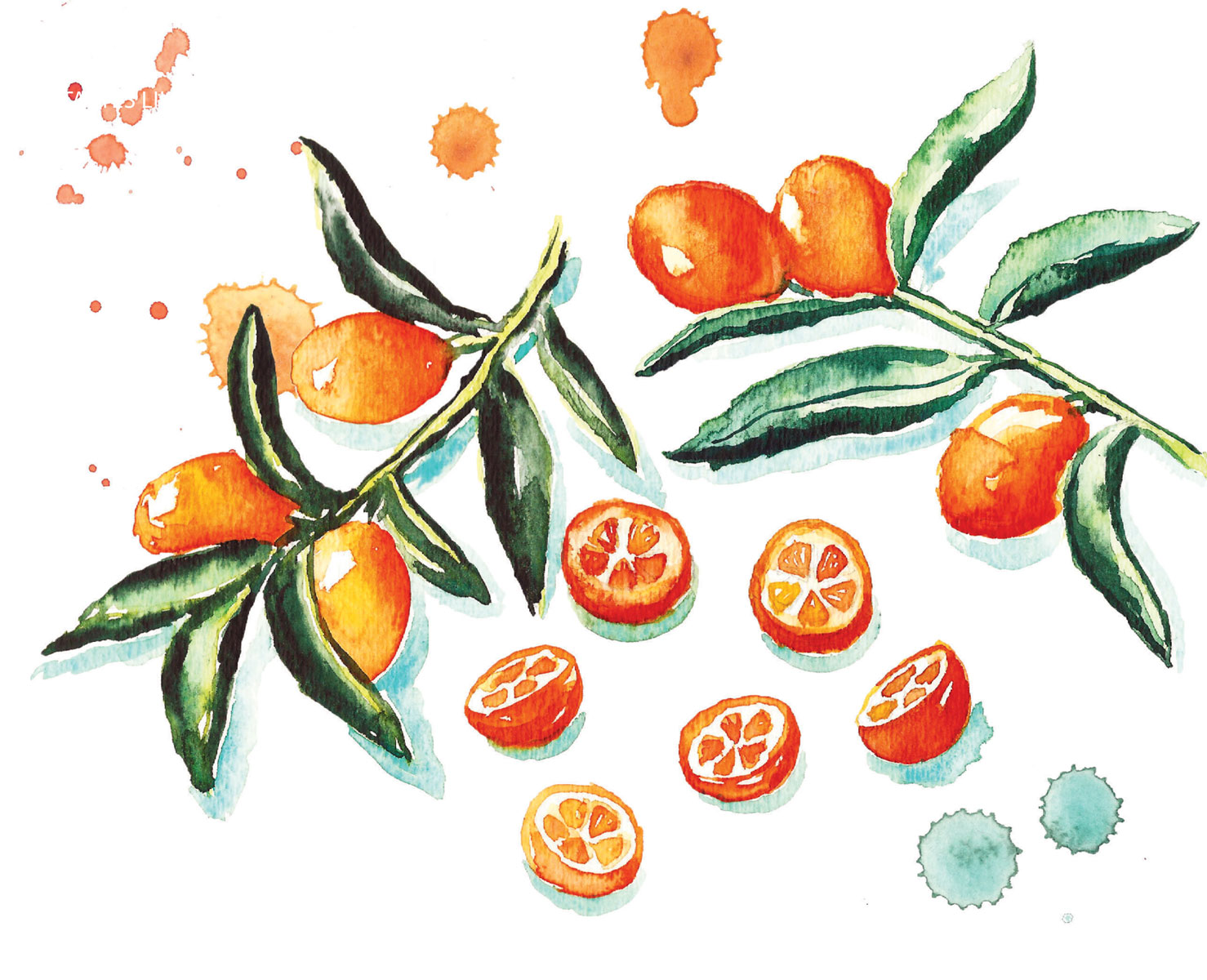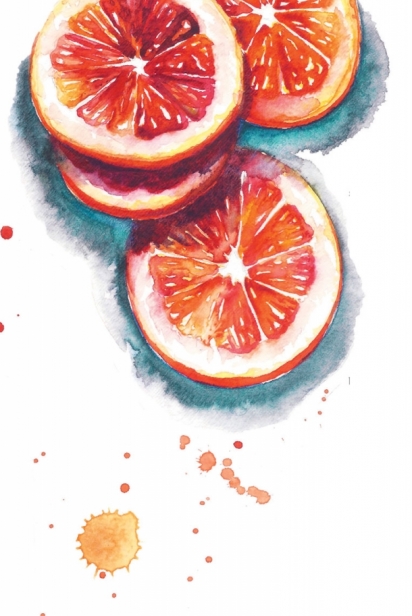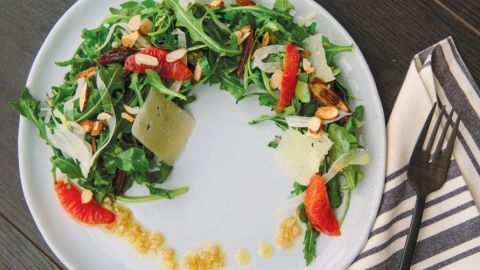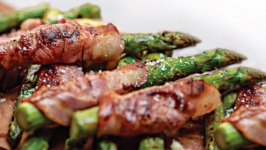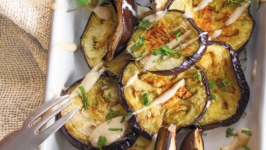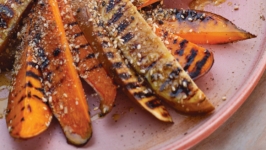Juicy Tale of Two Winter Citrus
When other fruits are taking the season off, winter citrus shine like the sun. A reminder that winter can taste sunny even if there are a lot of clouds around. (Hopefully we’ll have clouds, which means rain, a very welcome sight in our county.) Two of my favorites for their flavor and flair are kumquats and blood oranges. Both are remarkable citrus that people too often overlook—but they shouldn’t.
kumquats
Kumquats may be the most distinctive of the citrus fruits, not only because of their diminutive size and olive shape, but in how you eat them. Unlike most citrus where the rind is used sparingly for essence, kumquat rinds are fabulous. Simply pluck from the tree and gently peel off the rind with your teeth and enjoy a tangy burst of sweet orange flavor sans bitter pith.
Now the inside is where you can pucker up; it is extremely sour and the edible seeds are astringent. This sweet-tart contrast makes kumquats an interesting ingredient that can be used in sweet or savory dishes, raw or cooked.
Kumquats made their debut in 12th-century China, according to literature from back then, and have long been cultivated in their native countries of India, Japan, Taiwan, the Philippines and Southeast Asia. In Asian cultures, kumquats symbolize good luck and prosperity and the plant is given as a gift during the Lunar New Year (this year on February 5). In Chinese and Vietnamese cuisine, kumquats are made into a ginger-honey concoction to treat colds and flu. Kumquats are also used in brines and extracts for medicinal purposes, including sore throats and respiratory issues. They are a rich source of vitamin C and good source of vitamin A and minerals.
I like to turn them into kumquat marmalade that can be used as a spread or for baking. You can also sliver them and add to salads. Many chefs I know also pickle and preserve them in sugar, salt or vinegar and use them as condiments for other dishes. To see this in action, check out the Cardamom-Coriander Spiced Pork Tenderloin with Pickled Kumquats.
blood oranges
Ah, yes, the name suggests something off-putting, unapproachable, saved for the daring at heart (think blood sausage and blood pudding, which actually have blood as an ingredient). But blood oranges are nature’s fruit, beautiful and unique from other citrus. They are a proclamation that winter has arrived and is as colorful as ever.
Thought to have originated in Sicily, Italy or China, blood oranges get their dark red hue from anthocyanins (antioxidant pigments) brought out by cool nights, which is why they are usually available from early winter into spring.
These citrus have a similar flavor to an orange but with a slight hint of tart raspberry. They also offer a great source of vitamin C and potassium.
I love using blood oranges. They make dishes really pop. I make a gorgeous arugula salad with Medjool dates, blood oranges, shaved Pecorino and toasted almonds. It’s an easy recipe and really allows the ingredients to stand on their own. Blood orange margaritas are a favorite party treat as well. Being a bit tangier than an orange, they make the perfect balance of sweet and tart for a margarita, and the color can’t be beat.
When working with blood oranges, I often cut off the orange rind tinged with red because it’s more difficult to peel than the rinds of other citrus.


